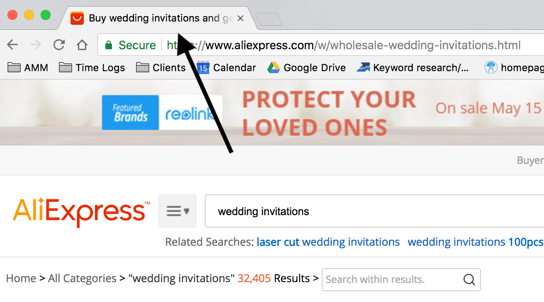Wouldn't getting sales be so much easier if you could just sit back and wait for the phone to ring? Ranking in one of the top positions on Google can be invaluable to your business, but getting there isn't so straightforward. Google can be a complicated system to master, especially when algorithms change so frequently. So what can you do on your website TODAY to help you rank? Check out these SEO tips.
First, you need the right tools in place first before you can start ranking.
1. Download the (Life changing) Moz ToolBar
This incredible free tool will help you set some benchmarks in terms of where you're at SEO-wise, so that you can track your progress. It can also pull valuable data from your competitor's and customer's sites. The two most important metrics the ToolBar will tell you are Domain Authority and Page Authority.
Domain Authority is a score Moz created from 1-100 that identifies how well your website ranks. It is based on your entire website.
Page Authority is a similar score that only looks at a specific page.
Get yourself set up with this Chrome plugin to start monitoring your Domain and Page Authorities.
 2. Install the Yoast SEO Plugin
2. Install the Yoast SEO Plugin
If your website is on WordPress, install the Yoast SEO plugin. It's free and allows you to customize your on-page SEO efforts quickly.
Then...
Update Your Meta Descriptions
Your meta description is what appears in search results under your page title. While this technically isn't a ranking signal, it helps improve your visibility immensely. Basically it serves as a call-to-action for users that found your page organically. The more often users click through after doing a search, Google recognizes the pattern, assumes that your website is relevant to the search term and rewards you with a higher rank.
 By default, most website platforms will pull in the first few sentences of copy on your page for a meta description. So unless you update it manually, it may not be descriptive of what the page is about or actually enticing people to click through. Follow these best practices for updating your meta descriptions:
By default, most website platforms will pull in the first few sentences of copy on your page for a meta description. So unless you update it manually, it may not be descriptive of what the page is about or actually enticing people to click through. Follow these best practices for updating your meta descriptions:
- Each page (and blog!) should have a unique meta description
- Keep it under 300 characters
- Include a call-to-action. This is your opportunity to convince the user to click through to your site!
- Incorporate a relevant keyword
Internal Linking
As Google shifts the focus away from keywords, more emphasis is being placed on internal linking. This is when you link to other relevant pages on your site (and the same domain) that help provide context or help the reader learn more. From Google's perspective, internal linking helps establish site architecture and spreads link equity effectively throughout your site.
Try to avoid linking to your homepage or contact us page. Those pages already have a lot of internal links as they usually exist in your navigation and other website will usually link to your homepage. Instead, link to relevant blog posts or specific product pages.
You can choose to embed internal links within your content where it flows naturally or you'll often see internal links called out separately. See the example below.
Got questions about your SEO strategy? Book a marketing coaching call!
Optimize Your Title Tags
Your title tag is what appears in your browser tab as well as in search results. Not only does it tell Google what your page is all about, it tells searchers, too.


Use these SEO tips to ensure your title tags are helping you boost your rank.
- Use a keyword
- Ensure they're unique to each page
- Keep it under 60 characters
Build Your Backlinks
While this tip may not be as quick and dirty as the others and requires a little more time, it's one of the most important SEO factors. When other websites link to yours, known as backlinking, it signals to Google that you're trustworthy. And trust is the #1 rank factor.
So how do you go about getting backlinks?
- Guest blogging on related industry sites
- Asking customers if you can provide a testimonial on their site
- Publishing useful content that people want to share in their blogs. This includes:
- Stats collected through your own study or survey
- Infographics (be sure to publish it on your blog along with some copy!)
- eBooks and content offers
Like most things, quality is better than quantity. Getting hundreds of backlinks from websites with low authority will do little to help your rank-ability. Aim to get backlinks from trustworthy websites with a high Domain Authority. Your Moz ToolBar should help you identify a site's Domain Authority but you can also use a tool like Small SEO Tools.
You might notice that most of your backlinks come from social media. While this is good for driving traffic to your website, Google doesn't give the same weight to backlinks from social media.
Publish Quality Content Regularly
The more content Google has to crawl, the more opportunity it has to rank. As long as it's optimized using the tips mentioned above, and is relevant to what people are searching, you'll be well on your way to the top of Google!





